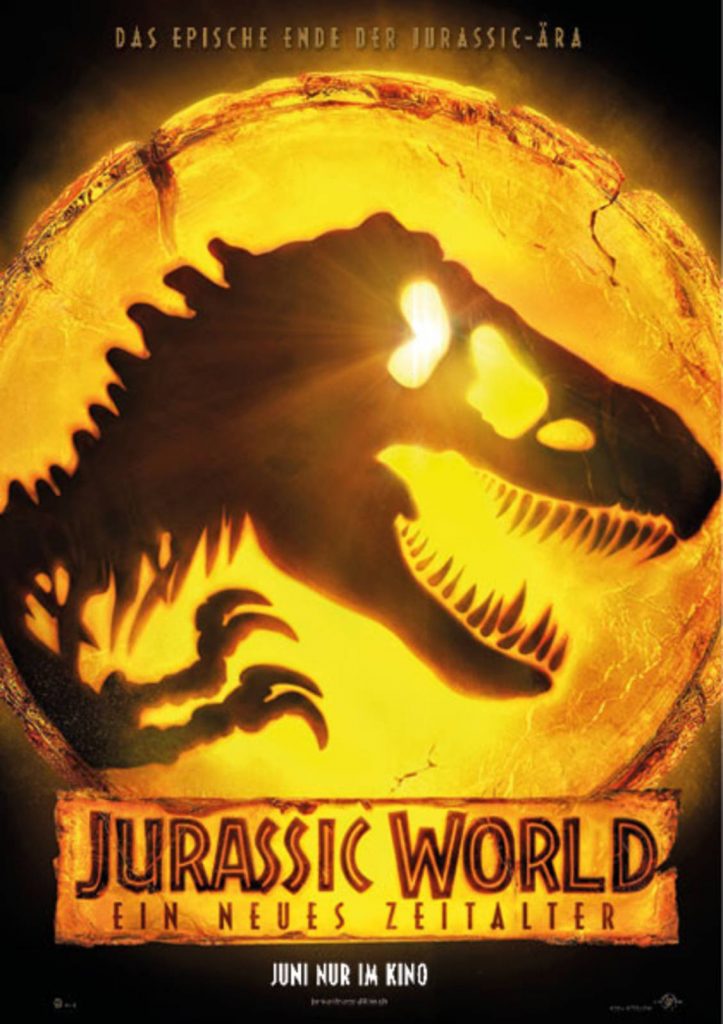Adapted from Richard Preston’s novel of the same name, The Blood Plague: The Ebola Story. Again, a true event. Even Stephen King, the best-selling American author known for his horror novels, said – “The first chapter of The Hot Zone is the scariest I’ve ever read in my life.”
The title of the play gets straight to the point. Focusing on the most dangerous virus in history – the Ebola virus. It’s not just a virus, it’s a monster. A demon that can’t be seen or touched, and once messed with, can never be shaken off. What exactly is the Ebola virus? The official description is this – Ebola virus is a virus in the filovirus family that causes Ebola haemorrhagic fever, which can be fatal and includes several different levels of symptoms (including nausea, vomiting, diarrhoea, changes in skin colour, body aches, internal bleeding, external bleeding, fever, etc.). It has a 50% to 90% lethality rate and the main causes of death are stroke, myocardial infarction, hypovolemic shock or organ failure.
Is it impossible to feel it fully? Then let’s get closer to it. High-energy warning! High energy warning! High-energy warning! Don’t read it while you’re eating, but if you’re afraid of getting nauseous, just scroll down. The beginning, the first chapter in the book, is the death of a human virus bomb. 1980, Kenya. A crow hovers in the air a few times before landing in a large house. Crows, in ancient witch accounts, are usually synonymous with death and fear. The owner of this large house, whose name was Charles Monet, seemed to be going through something painful. Yes, he was dizzy, sweating profusely and seemed to have lost his balance. His nanny rushed to call a taxi to pick him up for a flight to Nebbiro Hospital. On the plane, his eyes began to turn red, his face waxed yellow and was already covered in pus.
Once he stumbled back into his seat, he was even worse, leaned down and started searching for his bag, and with a spasmodic groan, started vomiting. Although he was already in a coma, he was still vomiting blood and black matter. He was taken to the hospital and no one knew what new disease he had. Monet had collapsed and the blood was flowing out. Seeing this, the playwright shuddered. What did it mean to bleed from all seven organs and to have vomited out his lungs. The feeling was as if something was rushing to try to break through the veins, from whatever place it could get out and find a new host. This something found it. Monet died after a final stream of blood spurted out of his throat, and it spurted right into the body, the corner of his mouth, and his eyes of the doctor who treated him, Shem Musokai.
The doctor’s face was dazed. The camera then pans. The story tells us that he too died. And a new virus was named after him, the Musoke Marburger virus. Yes, this is the Marburger virus, a virus most similar to the Ebola virus. They are both filoviruses with a risk level of 4. One that wraps around your body like a poisonous snake. Although the book describes this infection as not causing a mass outbreak of the virus, we were creeped out by the end of this opening five minutes. If the Marburger virus was just a small test run for the filovirus, the Ebola virus was not so kind. The Ebola virus is probably no stranger to mention.
In 2014, there was an outbreak of Ebola in West Africa. This Ebola outbreak saw a cumulative total of 17,290 confirmed and suspected cases of Ebola in West Africa, the United States and Europe, with 6,128 deaths. This was the first time that the horror of Ebola was clearly felt by humans. How do you fight an invisible bullet with a flesh-and-blood body? Some describe people infected with Ebola as slowly melting away in front of you. And this deadly virus wasn’t just discovered in 2014, but actually back in 1976.
The Hot Zone takes us through two timelines to learn about this “monster”.
The US Army laboratory in 1989. Nancy is a colonel at the US Army Medical Research Institute of Infectious Diseases, in charge of researching new viruses. On this day, she receives a package from Hazelton containing blood clots from monkey 053. Expecting it to be just a monkey haemorrhagic fever virus, she was surprised to see under the microscope that it was indeed a filamentous body. Nancy’s nerves were instantly on edge, this was no small matter, and to find out what the hell had been laced into it, she had to get BL4 for testing. BL4, biohazard level – the highest level. Name a few viruses that people know about to get an idea of how deadly level 4 is. HIV (AIDS) is a level 2, SARS is usually a level 3, Ebola and Marburger are only level 4. So Nancy decided to take her subordinates in. The information says – in a typical international P4 laboratory, there will be at least 10 security doors in the pathway to the core area, seven of which require interlocking, so that if one door is left open, the other must not open, this is to prevent air from circulating in tandem.
There are often internal and external changing areas, filtration areas, buffer areas, sterilisation areas and other preparation areas in P4 labs. Nancy and the others did. You have to get naked first and then put on one layer after another. First they change into close-fitting sterilised underwear, then they enter the negative pressure and high temperature area, put on sterilised socks under the UV killing lamps and tape the seam between the socks and trousers tightly. Finally, you put on a completely closed protective suit, as if you were buried in a coffin.
Immediately afterwards it’s time to enter the P4 protective area ….. However, we all know that in medicine, arguments are essential. Nancy is of one school of thought, so there must be those with opposing views to hers. When the unidentified creature was first discovered, her colleague Peter was that person. Peter didn’t think it could be Ebola; how could a virus that horrible suddenly enter the United States? Even if it was indeed some kind of bacteria that had invaded the petri dish, it couldn’t be Ebola.
With two opinions, there would be two ways of dealing with it, but what was unexpected was that both went wrong. Upon entering P4, Nancy accidentally had her protective suit crushed by the door while taking the Ebola virus, causing a rupture at her wrist and exposing the wound directly to the air. On the other hand, Peter, to prove his point, chose to sniff the virus directly through his nose, not only by himself, but also by his colleagues.
If it really was Ebola, such behaviour would undoubtedly amount to suicide. Just like that, everyone was at risk of being infected. In this emergency, Nancy had no choice but to turn to him – her own mentor, the virus expert Carter. For he, having been to the site of the first Ebola outbreak, has horrific memories that will never be forgotten. So there was a second timeline, in 1976, when Carter was still working at the International Centre for Disease Control.
One day they received a letter from Dr. Ewanda, who was working in Africa, saying that a new type of virus had been discovered, something that was moving fast and killing people everywhere it passed. Thinking it was just an ordinary virus, Carter and an interpreter decided to go and return. What they didn’t expect was to be dumbfounded by the way the local villagers described the affected villages – “This forest is bleeding.”
A creepy description. It was only when they reached the Ebola River in the DRC that they really understood what it meant to have a forest that was bleeding. It was a wilderness. It didn’t look like a village, it looked like a graveyard. Whenever the military found people with the disease, they would immediately kill them and burn them, just to keep the virus in the forest. It may seem brutal, but the reason for this is that they have seen the power of the virus and even the doctors are not immune to it. When they returned to the village of Yambuku, which they had visited on their way over, they were even more stunned by the sight before them. Sister Monica, who had been giving injections a few days earlier, had also died of the virus and was spitting blood from her mouth. Several of the remaining nuns, too, were dead, and one, knowing that she was bound to die, also committed suicide like a god. She was not mad, she simply stopped the spread of the virus in her own way. Painful and real. It is also people like Carter, Nancy, and even the nuns, who, unbeknownst to the people, put their lives on the line for the safety of the people in this play that shocks the playwright the most.
The playwright couldn’t help but think of them. Throughout history, mankind has been tested by countless viruses, large and small, which have taken the human race in waves almost every time. Between 1348 and 1352, Europe’s public enemy was called the Black Death. This brutal killer cut off 1/3 of Europe’s population, a total of about 25 million people, and in China, was called the bubonic plague. There was also the smallpox virus, known as the Herculean cold-blooded killer, which was discovered in the New World and then brought to the Americas by the colonists. It was once suggested that 80-90% of Native Americans died of smallpox, and this tragedy was repeated in Australia – the smallpox virus, brought by the colonists, killed 50% of Australia’s aboriginal people. Then there was rabies, which in the old days had a 100% mortality rate in the event of an attack. Fortunately, there were a number of people who spent their lives fighting the virus. Louis Pasteur, for example, invented the rabies virus. He was the originator of microbiology, the man who came up with the most familiar method of pasteurisation, and the man who created the world’s first rabies vaccine. Although he was not a doctor, it was as if he existed to save lives. Gu Fangzhou, for example, invented the “sugar pill” and eradicated polio in China. He devoted his life to the fight to eradicate polio, an acute viral infection in children. Although Gu Fangzhou has passed away, netizens have said that the taste of sugar pills will never be forgotten.
Apart from them, there is another one we should not forget, and that is her, Tu Youyou, the first local Chinese scientist to win the Nobel Prize in 2015. Her discovery of artemisinin has made a huge contribution to the treatment of malaria. It is because of them that hell is gradually becoming heaven. I only hope that those ancient and mysterious viruses will never awaken.













